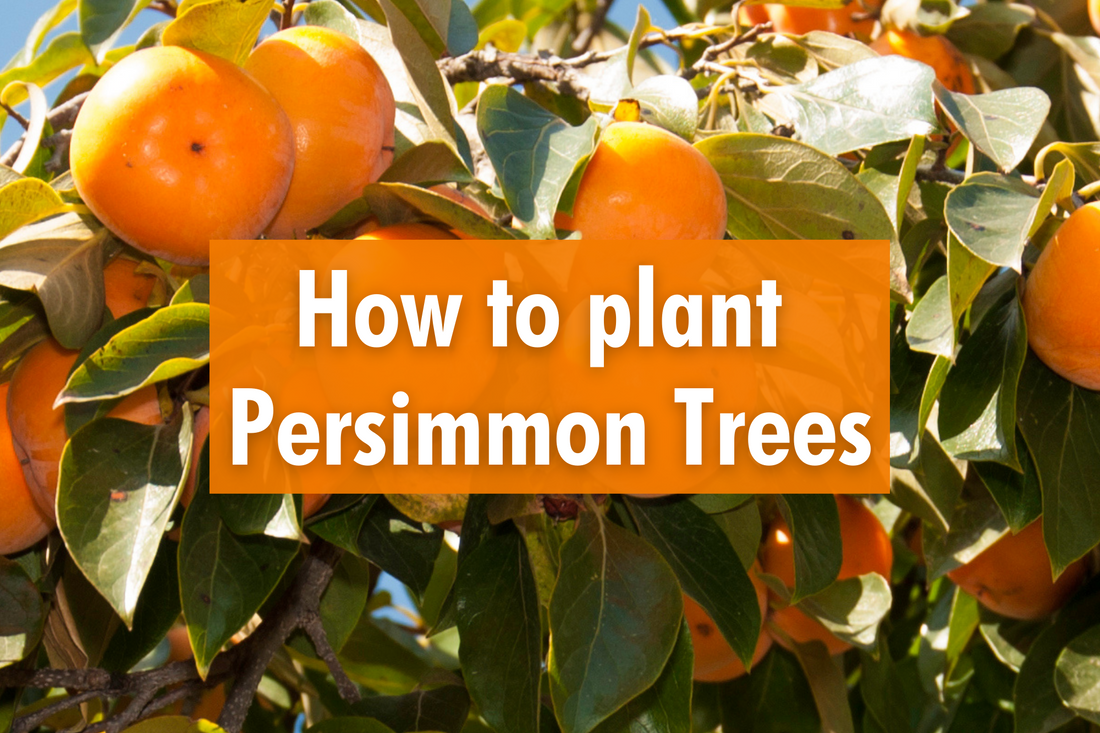
How to plant persimmon trees
Share
Persimmon trees are renowned for their striking appearance and delectable fruit. Their glossy green leaves turn vibrant shades of yellow, orange, and red in autumn, making them a stunning addition to any garden. However, it's the fruit that really sets the persimmon tree apart. These sweet, juicy fruits are packed with nutrients, making them a real treat.
| Region | Best Time to Plant Persimmon Trees |
|---|---|
| Northeast | Early spring or late fall |
| Southeast |
|
| Midwest |
|
| Southwest |
|
| West Coast | Early spring or late fall (or late winter in CA) |
Like many fruit trees, persimmons take a few years to begin producing fruit. But once they do, they can yield hundreds of fruit each year. The good news is that persimmons are relatively low-maintenance. They require full sun, and well-drained soil, and are fairly drought-tolerant.
There are many persimmon varieties to choose from, but my personal favorite is the Fuyu variety. Unlike some other varieties, Fuyu persimmons can be eaten while they are still crisp, like an apple. As they ripen, they become softer and sweeter, making them a great addition to baked goods like cookies and pudding.
Growing persimmons is not only rewarding but also a great conversation starter. Guests are always fascinated by the tree and its fruit, with many people having never seen or tasted a persimmon before. Persimmons are also incredibly nutritious, providing a good source of vitamin A, vitamin C, and dietary fiber. They also contain carotenoid antioxidants, which are beneficial for heart health.
If you're planning to grow persimmon trees, here are some simple steps to get started:

Step 1: Choose the Right Location
Persimmon trees thrive in areas with full sun exposure and well-draining soil. The location should have good air circulation and be protected from strong winds. Persimmon trees prefer slightly acidic soil with a pH between 6.0 and 7.5. It's a good idea to have your soil tested before planting to ensure it's suitable for persimmon trees.


Step 2: Prepare the Planting Hole
Dig a hole that's twice as wide and as deep as the root ball of the persimmon tree. Remove any grass or weeds from the area and loosen the soil at the bottom of the hole. If the soil is heavy or poorly draining, add some organic matter like compost or aged manure to the bottom of the hole.

 Step 3: Plant the Persimmon Tree
Step 3: Plant the Persimmon Tree
Remove the persimmon tree carefully from its container and gently loosen any circling roots. Place the tree in the center of the hole and backfill with the soil you removed. Ensure the top of the root ball is level with the soil surface. Water the tree thoroughly to settle the soil and eliminate any air pockets.


Step 4: Mulch the Tree
Adding a layer of mulch around the base of the tree helps retain moisture and suppress weeds. Apply a 3-4 inch layer of organic mulch like shredded bark or wood chips, keeping the mulch away from the trunk of the tree.

 Step 5: Water and Fertilize
Step 5: Water and Fertilize
After planting, water the tree deeply once a week, or more often during hot and dry weather. Persimmon trees benefit from regular fertilization, especially during the first few years after planting. Use a balanced fertilizer, such as a 10-10-10 or 16-16-16 formula, and follow the instructions on the package for application rates and timing.

Step 6: Prune the Tree
To promote healthy growth and fruit production, prune your persimmon tree in late winter or early spring. Remove any damaged, diseased, or crossing branches, and thin out crowded areas to improve air circulation. Persimmon trees are sensitive to over-pruning, so avoid cutting back more than 20-25% of the tree's canopy.

